5 Tips to Make You the Next Lady or Lord of the Dance
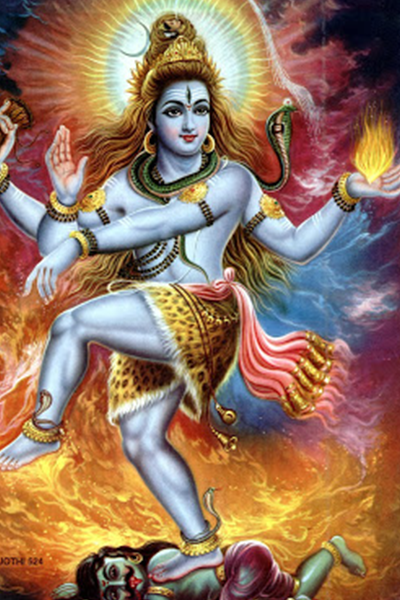 Shiva, the cosmic dancer
Shiva, the cosmic dancer
In Hindu mythology, Shiva is the god of transformation and the destroyer of evil. He has many names and takes on myriad different appearances; as Nataraja, he is the Lord of the Dance. Nataraja’s dance is called the Tandavam, which represents the cosmic foxtrot of creation and destruction and the natural rhythm of life and death. He performs this dance at the center, or heart, of the universe.
The Tandavam is said to release the souls of all mankind from illusion. Through Shiva’s dance, we transcend the belief that we are separate individuals. Shiva’s female counterpart is Parvati, the goddess of love and devotion. Together they represent the bond–the oneness–that connects us all.
Natarajasana: Lord of the Dance Pose
In yoga, natarajasana (Lord of the Dance pose) is a standing balancing pose dedicated to Shiva’s dance. When you do this pose skillfully, you will stretch the muscles in your chest, abdomen and thighs. This well-known backbend stimulates anahata (your heart chakra), which is associated with love and compassion. During the month of February, we invite you to let love in–from yourself, your loved ones or even some strangers. Natarajasana is Powerflow Yoga’s latest Pose of the Month so read below five tips to help make you the next lord (or lady) of the dance.
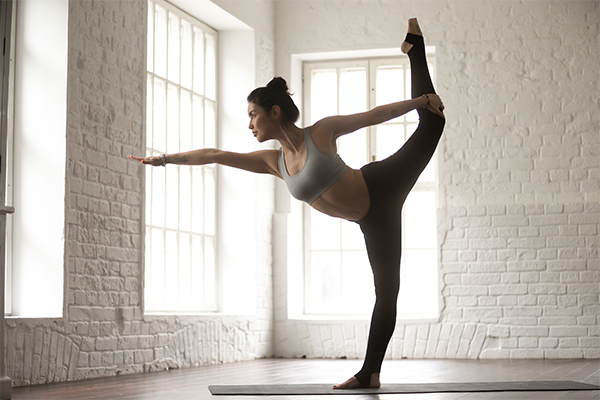
1. Plant your roots and stand firm
Your foot is like a tripod built upon three arches: transverse, lateral and medial. In architecture, arches distribute the effects of gravity evenly across the whole structure. Similarly, you should spread your body weight equally across the three arches of your feet. If you collapse in one of these arches, other muscle groups have to work that much harder to stabilize your body.
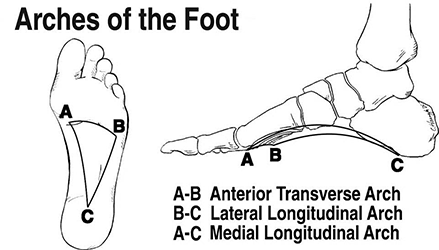 In order to stand on one foot, you must first learn how to properly stand on two feet. Practice standing in tadasana (Mountain pose) and observe how you distribute your weight. Do you lean to the outer edges of your feet? Or maybe you collapse on the inner sides? Focus on rooting down from the centers of your heels to your little toes to the balls of your big toes. Then, practice lifting one foot an inch off the floor. Observe how your other foot changes. Gradually lift higher as you prepare for Lord of the Dance pose but maintain the integrity of your standing foot.
In order to stand on one foot, you must first learn how to properly stand on two feet. Practice standing in tadasana (Mountain pose) and observe how you distribute your weight. Do you lean to the outer edges of your feet? Or maybe you collapse on the inner sides? Focus on rooting down from the centers of your heels to your little toes to the balls of your big toes. Then, practice lifting one foot an inch off the floor. Observe how your other foot changes. Gradually lift higher as you prepare for Lord of the Dance pose but maintain the integrity of your standing foot.
2. Keep your head high and your glutes strong
In Lord of the Dance pose, a common misalignment happens when your standing foot turns toward center. If this happens, then your foot likely turns in poses like Warrior 3 and Half Moon. Turning your foot inward makes your knee vulnerable to excess torque. Your body will wobble as you struggle to find equilibrium and protect your knee joint.
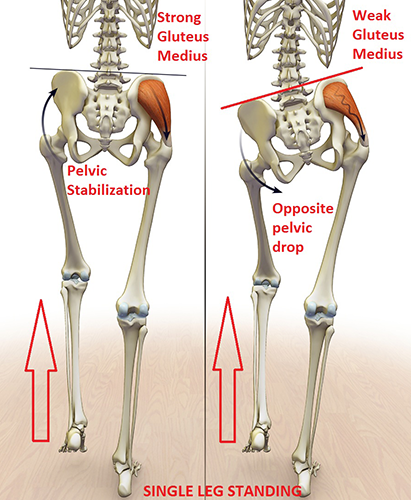 There are many factors, including collapsed arches, that make you turn your foot. Often, a weak gluteus medius muscle is the culprit. In walking, this muscle stabilizes the pelvis as you lift one foot and step forward. If you lift one leg and your gluteus muscle is weak, the weight of your pelvis becomes destabilized. As a result, other muscle groups overcompensate, and you inwardly turn your foot to redistribute your weight.
There are many factors, including collapsed arches, that make you turn your foot. Often, a weak gluteus medius muscle is the culprit. In walking, this muscle stabilizes the pelvis as you lift one foot and step forward. If you lift one leg and your gluteus muscle is weak, the weight of your pelvis becomes destabilized. As a result, other muscle groups overcompensate, and you inwardly turn your foot to redistribute your weight.
One way to strengthen your gluteus medius in yoga is through vrksasana (Tree pose). Place your hands on your hips, then slowly begin lifting one leg without dropping your hip. Keep your pelvis level as you externally rotate your thigh. Use the feedback from your hands to maintain focus on your hips. Most of all, notice that your gluteus medius in the opposite leg becomes very active to stabilize the weight of your pelvis.
3. Be cool and stay focused
Tree pose is a lovely precursor to Lord of the Dance pose because it helps to internally focus your mind. “Your mind likes to move from one thought to another,” says lead 200 hour teacher trainer Stacey Bell. “It’s similar to the way a monkey in a tree quickly jumps from branch to branch.” If your mind is racing in a pose like natarajasana, you will fall over. Thus, balancing poses challenge your ability to shift attention away from your mind and back into your body.
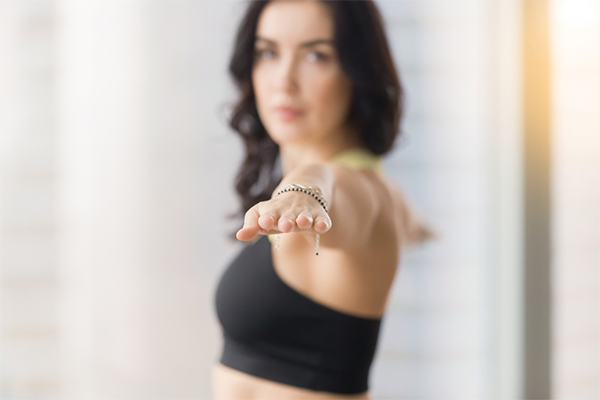
Some styles of yoga offer a drishti (focused gaze) in each pose to increase your concentration. You can also develop your drishti by simply fixating your eyesight on a single point; for example, gaze intently at your middle fingernail in Warrior 2. As you refine your gaze, the rest of the room will start to become blurry. Then, try to soften your gaze as if your eyes were drawing back into your skull. Learn to focus your gaze while you stand with both feet on the floor. Then you can apply the practice to poses like Lord of the Dance.
Next, breathe with intention. You may notice that it is hard to do anything on an inhalation. Instead, focus more on your exhalation, which is when your body naturally contracts. Allow the inhalation to expand your body, but don’t demand it to. On the exhale breath, kick and reach with equal force.
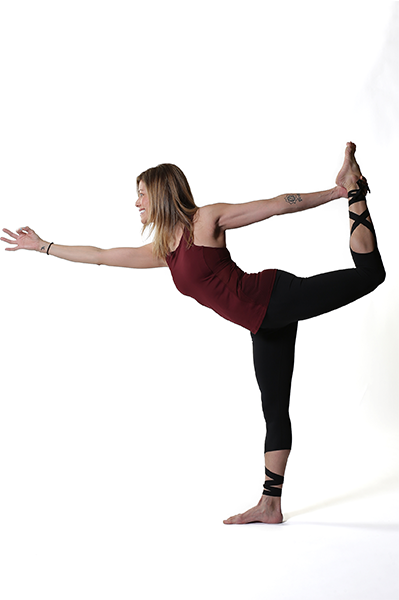 4. Be patient–good things take time
4. Be patient–good things take time
Natarajasana is all about balance: of kicking and reaching, of expansion and contraction, of effort and ease. Some days you remain steady in the pose; other days, you fall out. Such is life. But don’t let impatience wear you down. Much like a seed takes time to sprout, a yoga practice takes time to become.
In natarajasana, your body may resemble a U-shape or a J-shape depending on how you practice. Be patient, and stay upright for a few breaths. Focus on finding the backbend (the U-shape) by lifting the front body and kicking your lifted leg up and back. Move slowly, focus your mind and steady your breath while you stand upright. Then, after your body has acclimated to the shape, slowly bow forward toward the J-shape.
5. You don’t have to practice natarajasana the way your neighbor does
If balance is such an issue that you usually skip Lord of the Dance pose altogether, you could use a wall for extra support. Furthermore, you can come to lie on your mat to completely remove the balance component. Roll over onto one side and you can do natarajasana this way. You get the same benefits that you enjoy standing without feeling stressed or left out. The Tandavam, the cosmic dance Nataraja performs, liberates us from suffering and illusion. Accept your body for its beauty and flaws, let love in and humbly move on.
Once you are finished exploring natarajasana, stand in Tadasana for a breaths. Close your eyes, bring your awareness to your spiritual center–your heart chakra–and let love in. Then, wind down your practice with a hip-opening posture, some twists and a long savasana.
